
Ultrasound
Scope & Guideline
Advancing the Future of Imaging
Introduction
Aims and Scopes
- Endoscopic Ultrasound (EUS) Applications:
The journal emphasizes the role of EUS in diagnosing and managing various gastrointestinal conditions, particularly pancreatic diseases, by providing insights into its techniques, efficacy, and safety. - Contrast-Enhanced Ultrasound Techniques:
There is a consistent exploration of contrast-enhanced ultrasound methodologies for improving diagnostic accuracy in various conditions, especially related to pancreatic tumors and other solid lesions. - Interventional Procedures:
The journal highlights interventional ultrasound techniques, including EUS-guided biopsies, drainage procedures, and therapeutic interventions, showcasing advancements in minimally invasive approaches. - Artificial Intelligence in Ultrasound:
A growing focus on integrating artificial intelligence and machine learning into ultrasound diagnostics, reflecting the journal's commitment to modernizing practices and enhancing diagnostic precision. - Systematic Reviews and Meta-Analyses:
Regular publication of systematic reviews and meta-analyses demonstrates the journal's emphasis on evidence-based practice, providing comprehensive evaluations of existing literature on ultrasound applications.
Trending and Emerging
- EUS-Guided Innovations:
There is a marked increase in studies focusing on innovative EUS-guided techniques, such as new stent designs and advanced drainage methods, which are crucial for improving patient care in complex cases. - Artificial Intelligence Integration:
The integration of artificial intelligence in ultrasound diagnostics is rapidly gaining traction, highlighting its potential to enhance diagnostic accuracy and streamline clinical workflows. - Multidisciplinary Consensus Guidelines:
The emergence of consensus guidelines from multidisciplinary teams indicates a trend towards standardized practices in ultrasound applications, particularly in managing pancreatic and biliary disorders. - Patient-Centric Approaches:
Research emphasizing patient outcomes and safety, including studies on the efficacy of various ultrasound-guided interventions, reflects a growing trend towards patient-centric care in ultrasound practices. - Training and Simulation Techniques:
The development of advanced training models and simulation techniques for EUS training is becoming increasingly important, aiming to improve the competency of practitioners in performing complex ultrasound procedures.
Declining or Waning
- Basic Ultrasound Techniques:
There appears to be a decrease in studies focused on fundamental ultrasound techniques, as the field moves towards more advanced applications and technologies. - Traditional Imaging Comparisons:
Research comparing ultrasound to older imaging modalities, such as CT and MRI, has become less prominent, indicating a shift towards more innovative and integrative approaches. - Non-Interventional Studies:
There is a noticeable reduction in non-interventional studies, as the journal increasingly prioritizes research that includes clinical applications and outcomes. - Non-Gastroenterological Applications:
The journal has seen fewer publications addressing ultrasound applications outside of gastroenterology, suggesting a narrowing of its focus to specialized areas within this field.
Similar Journals
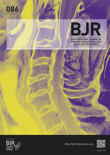
BRITISH JOURNAL OF RADIOLOGY
Exploring New Frontiers in Nuclear Medicine and ImagingBritish Journal of Radiology is a leading peer-reviewed journal published by the British Institute of Radiology, dedicated to advancing the field of radiology, nuclear medicine, and imaging. With a prestigious history dating back to 1945, this journal is at the forefront of disseminating cutting-edge research and innovations that significantly impact clinical practice. Currently enjoying a Q1 ranking in the field of radiology and Q2 in general medicine for 2023, it is recognized for its rigorous standards and high-quality content, ranking #87 out of 333 in Scopus for specialties related to Medicine, Radiology, Nuclear Medicine, and Imaging, placing it in the 74th percentile. Researchers, professionals, and students are encouraged to engage with the latest findings and comprehensive reviews presented within its pages, which contribute not only to academic discourse but also to the evolution of practice in the wider medical community.
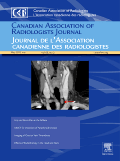
CANADIAN ASSOCIATION OF RADIOLOGISTS JOURNAL-JOURNAL DE L ASSOCIATION CANADIENNE DES RADIOLOGISTES
Elevating Knowledge: Your Gateway to Radiological ExcellenceCanadian Association of Radiologists Journal - Journal de l'Association Canadienne des Radiologistes, published by SAGE Publications Inc, stands as a vital resource in the realms of Radiology and Medicine. With an ISSN of 0846-5371 and an E-ISSN of 1488-2361, this esteemed journal offers insightful research articles and reviews that contribute to the advancement and practice of radiology, benefiting both seasoned professionals and emerging scholars. Holding a commendable Q2 ranking in both the fields of Medicine (miscellaneous) and Radiology, Nuclear Medicine and Imaging, the journal is recognized for its impactful publications, positioning its content within the top 40% of global research outputs. Since its inception in 1973 and continuing through to 2024, it has consistently provided a platform for cutting-edge research and clinical innovations, facilitating knowledge transfer among practitioners and educators. The journal’s significant influence is evidenced by its Scopus rank of #67 out of 333 in its category, placing it in the 80th percentile of academic excellence. Although it does not offer open access, its contributions are critical for advancing the field, making it essential reading for all those invested in the evolution of radiological sciences.

Cardiovascular Ultrasound
Empowering clinicians with cutting-edge ultrasound techniques.Cardiovascular Ultrasound, published by BMC, is a leading open-access journal dedicated to advancing the field of cardiovascular imaging through ultrasound techniques. Since its inception in 2003, this esteemed journal has provided a platform for high-quality research and innovative methodologies, contributing significantly to both cardiology and radiology. With an impressive impact in the academic community, it consistently ranks in the Q2 category for Cardiology and Cardiovascular Medicine, as well as in Medicine (Miscellaneous) and Radiology, Nuclear Medicine, and Imaging, as per the 2023 metrics. The journal aims to disseminate critical knowledge that enhances diagnostic practices, patient care, and clinical outcomes, making it an essential resource for researchers, clinicians, and students. Emphasizing the importance of accessible knowledge, Cardiovascular Ultrasound ensures that all published articles are freely available, fostering collaboration and innovation across the global community of cardiovascular professionals.
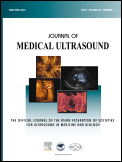
Journal of Medical Ultrasound
Bridging theory and practice in medical imaging.Welcome to the Journal of Medical Ultrasound, a premier open access journal published by Wolters Kluwer Medknow Publications since 2002, dedicated to advancing the field of medical imaging through the use of ultrasound technology. With an ISSN of 0929-6441 and an E-ISSN of 2212-1552, this journal has been a vital resource for researchers, professionals, and students in the fields of radiology, nuclear medicine, and imaging. Based in the vibrant city of Singapore, the journal has converged data across its publication years from 1994 to 2024, striving to disseminate high-quality research and innovative practices within the community. Despite its current Q4 ranking in 2023 with a Scopus rank of 240/333 in its category, the Journal of Medical Ultrasound continues to be a significant contributor to the discourse in medical imaging. Researchers seeking to share their findings and explore the latest advancements in ultrasound are encouraged to contribute to this evolving platform, which embraces a wide-ranging spectrum of studies and clinical applications in the realm of diagnostic imaging.

EUROPEAN RADIOLOGY
Illuminating the Path to Radiological AdvancementEUROPEAN RADIOLOGY, published by SPRINGER, stands as a prestigious international journal in the field of radiology, nuclear medicine, and imaging, with an impressive impact factor that underscores its significance among peers. With an ISSN of 0938-7994 and an E-ISSN of 1432-1084, this journal provides a platform for cutting-edge research and advancements in medical imaging from 1991 to 2024. Recognized as a Q1 journal in both general Medicine and the specialized Radiology category by 2023, EUROPEAN RADIOLOGY ranks an impressive #17 out of 333 in its field according to Scopus, placing it in the 95th percentile. While it does not currently offer Open Access options, the journal remains essential reading for researchers, professionals, and students striving to stay at the forefront of developments in diagnostic imaging and related technologies. By contributing to a comprehensive understanding of radiological practices, EUROPEAN RADIOLOGY plays a crucial role in shaping the future of medical diagnosis and patient care.

Iranian Journal of Radiology
Fostering Collaboration in Radiology and Nuclear MedicineWelcome to the Iranian Journal of Radiology, a pivotal platform dedicated to advancing the field of radiology, nuclear medicine, and medical imaging. Published by BRIEFLAND, this journal aims to disseminate high-quality original research, reviews, and clinical studies that contribute substantially to the global scientific community. Established in 2008 and spanning until 2024, the journal provides an essential archive of knowledge in a rapidly evolving discipline. Although it currently holds a Q4 quartile ranking in the 2023 Scopus metrics, it serves as an important resource for both emerging and established researchers looking to submit their work. Located in the Netherlands, the journal is committed to open dialogue and collaboration amongst professionals in the field, reflecting its accessibility and relevance to both practitioners and academics. With its continued growth and commitment to quality, the Iranian Journal of Radiology is poised to enhance understanding and innovation in diagnostic imaging.

EUROPEAN JOURNAL OF RADIOLOGY
Advancing Imaging Excellence in HealthcareThe European Journal of Radiology, published by Elsevier Ireland Ltd, is a premier peer-reviewed journal in the fields of radiology, nuclear medicine, and imaging. Established in 1981, it has carved a significant niche within the academic community, showcasing innovative research that enhances medical imaging practices and improves patient care. With an impressive ranking in the Q1 category for both Medicine (miscellaneous) and Radiology, Nuclear Medicine, and Imaging in 2023, the journal is recognized globally for its commitment to advancing scientific knowledge and improving imaging methodologies. The journal's Scopus ranking of #60/333, placing it in the 82nd percentile, underlines its reputation for high-quality research and scholarly contributions. While traditionally a subscription-based journal, it continually evolves to meet the demands of the academic landscape, aiming to bridge the gap between research and clinical practice. Researchers, healthcare professionals, and students alike can benefit from exploring its extensive archives and current publications, which are curated to foster education and innovation in the medical imaging domain.
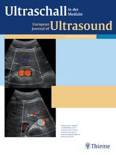
ULTRASCHALL IN DER MEDIZIN
Transforming Healthcare Through Ultrasonography InsightsULTRASCHALL IN DER MEDIZIN is a leading peer-reviewed journal published by GEORG THIEME VERLAG KG, focusing on advancements in the field of ultrasonography and its applications in medicine. With its strong presence in Germany, this journal has been instrumental in disseminating significant research findings since its inception in 1980, and it continues to be relevant through 2024. Recognized for its impact within the academic community, it holds a Q2 ranking in both Medicine (miscellaneous) and Radiology, Nuclear Medicine and Imaging, placing it in the top 25% of journals in these categories. The journal's Scopus rank of #84 out of 333 in its field further emphasizes its importance, reflecting the high-quality research it publishes. While it operates under traditional access options, ULTRASCHALL IN DER MEDIZIN remains a vital resource for researchers, healthcare professionals, and students aiming to stay updated on the latest ultrasonographic techniques and innovations that enhance patient care.
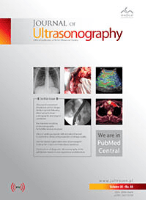
Journal of Ultrasonography
Connecting Researchers and Practitioners in UltrasonographyJournal of Ultrasonography, published by SCIENDO, is a vital open-access platform for advancing knowledge and research in the fields of Radiology and Ultrasound Technology. Since its inception in 2013, this journal has provided a forum for practitioners and researchers to share innovative findings and critical insights, making it an essential resource for professionals in the medical imaging community. With an ISSN of 2084-8404 and an E-ISSN of 2451-070X, the journal aims to enhance clinical practice and foster academic growth through rigorous peer-reviewed publications. Notably, it has achieved a Q3 ranking in both Radiological and Ultrasound Technology and Radiology, Nuclear Medicine and Imaging, reflecting its commitment to quality and relevance. Based in Germany, it has also emerged as a significant contributor to the global discourse in medicine, currently ranked in the 39th percentile within its niche disciplines according to Scopus. The journal is uniquely positioned to serve as a conduit for innovative research, making it indispensable for researchers, healthcare practitioners, and students dedicated to the advancement of ultrasonography.
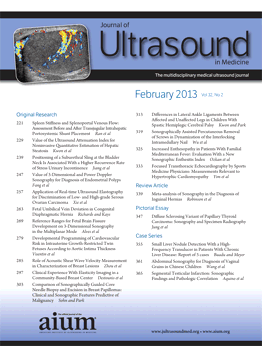
JOURNAL OF ULTRASOUND IN MEDICINE
Elevating Standards in Ultrasound Research and PracticeThe JOURNAL OF ULTRASOUND IN MEDICINE, published by WILEY, stands as a pivotal resource for researchers, professionals, and students in the domains of radiology, ultrasound technology, and medical imaging. Since its inception in 1982, the journal has established a robust presence, currently holding a commendable Q2 ranking across multiple categories, including Medicine (miscellaneous) and Radiology, Nuclear Medicine, and Imaging, as per 2023 metrics. With its impact reflected in Scopus rankings—96th in Radiology and 22nd in Radiological and Ultrasound Technology—it continues to offer innovative research, clinical studies, and reviews that push the boundaries of medical imaging applications. Although it does not subscribe to an Open Access model, the journal remains committed to disseminating high-quality, peer-reviewed articles, making it an essential platform for advancing knowledge and technological progress in ultrasound medicine. For researchers aiming to stay at the forefront of this rapidly evolving field, the JOURNAL OF ULTRASOUND IN MEDICINE is undoubtedly a key publication to consider.